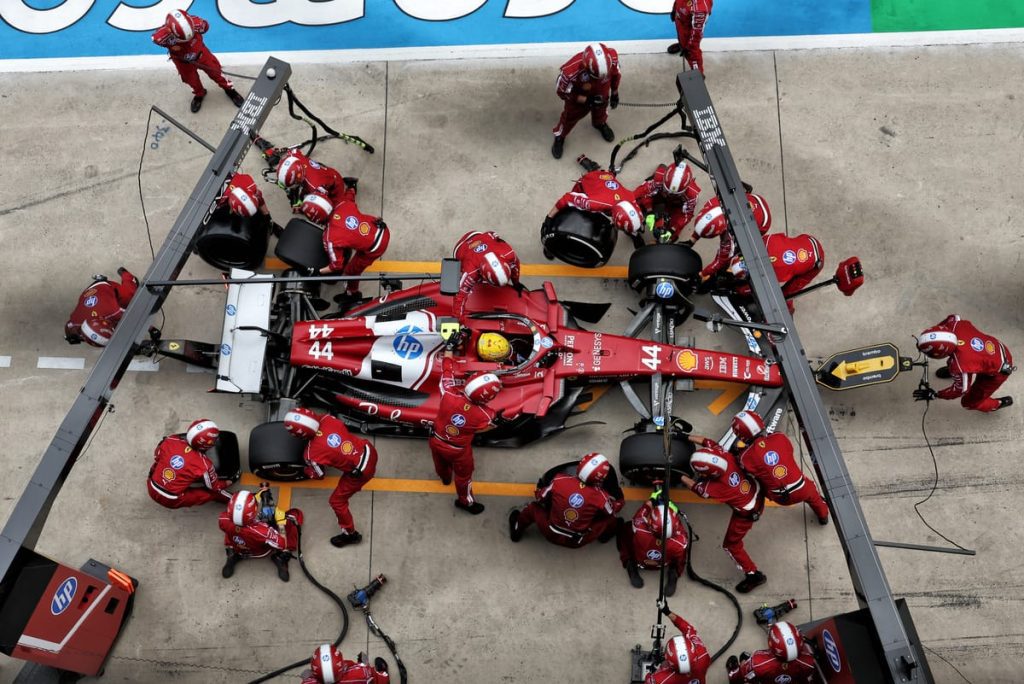This season, Ferrari has established itself as the leader in pitstop efficiency, prompting other Formula 1 teams to closely observe the strategies that have accelerated their turnaround times.
After achieving the two fastest pitstops at the season opener in Australia and executing the quickest tire change of 2025 at the Chinese Grand Prix with a remarkable 2.05 seconds for Charles Leclerc, Ferrari’s methods have drawn the attention of the FIA.
Following the Chinese Grand Prix, the FIA conducted a review of Ferrari’s pitstop procedures as part of its routine checks on various teams. This scrutiny is unusual since the FIA typically concentrates on specific technical elements of competing cars.
Removing Automation
The FIA’s investigation is part of a broader initiative to ensure there is no automation in pitstops, which could lead to dangerously rapid changes and unsafe situations during races. Article 10.9.2 of F1’s Technical Regulations prohibits automatic systems that signal drivers to exit the pit once tire changes are completed.
The regulations state: “Any sensor systems may only act passively.” However, teams have been exploring innovative methods to enhance pitstop speed, such as implementing additional lighting systems that assist in procedural timing or enable quicker actions, like removing jacks before wheel changes are finalized.
New-for-2025 Pitstop Rules
To mitigate the risks associated with expedited pitstops, the FIA has introduced new guidelines for the 2025 season that delineate the sequence in which pitstop tasks must be performed. This approach eliminates the previous method of relying on timing delays to accommodate human reaction times.
The updated process for pitstops will consist of four states:
- STATE 1: Wheel nut firmly attached and corner completed.
- STATE 2: Confirmation signal that the corner is complete and jacks are ready to be released.
- STATE 3: Jacks dropped after confirmation of the mechanisms being disengaged.
- STATE 4: “OK” signal given to the driver once all precautions are confirmed.
The FIA specifies that the “OK” signal can only be activated after both jacks are fully released, prohibiting any instantaneous triggers based on automated systems. Additionally, any feedback systems that could inform the driver about the status of the pitstop are banned to avoid premature departures from the pit.
In reviewing Ferrari’s procedures, the FIA analyzed their pitstop equipment, observed mock pitstops, and scrutinized data logs to ensure there were no violations. The regulatory body concluded that Ferrari’s practices are compliant, leaving their competitors with the challenge of deciphering their successful strategies.



